Behold my zero waste jeans
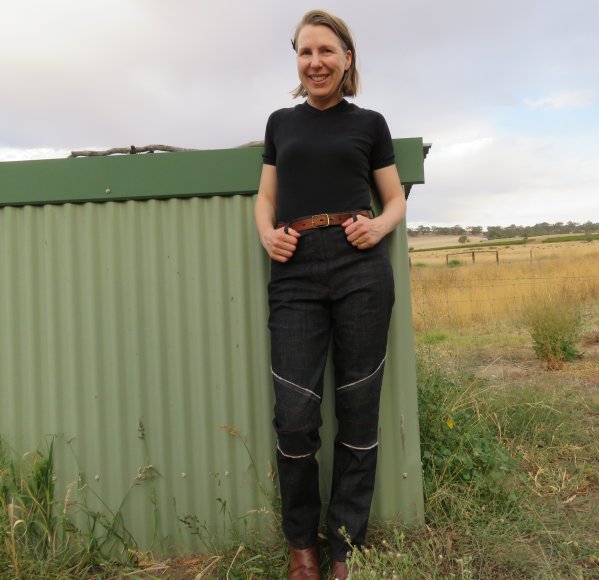
On the weekend I finished my zero waste jeans, and here they are!
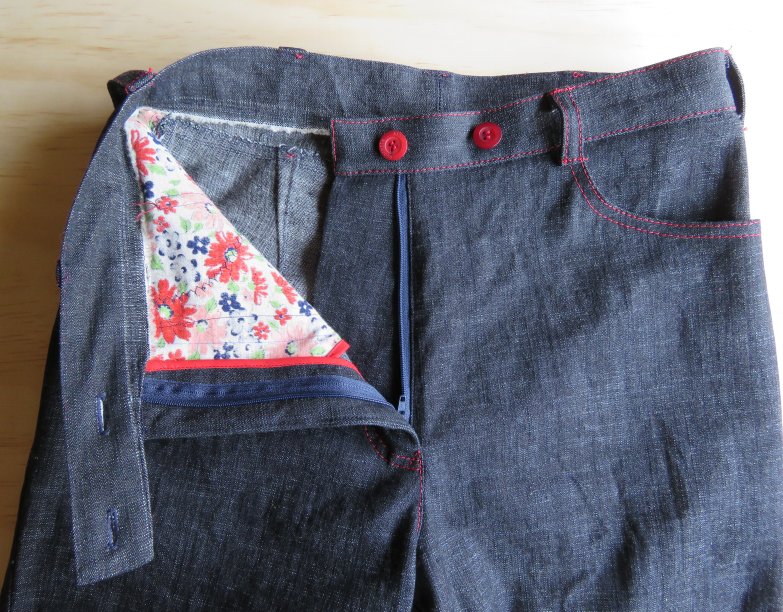
Read about my research and the beginning of my quest, cutting out, and the start of sewing them.
The sewing turned out to be fairly straight forward, much like sewing ordinary jeans.
There were some unusual shapes which were tamed as I pressed and sewed. For example, the back pockets have inconsistent seam allowances. Here they are before sewing on:

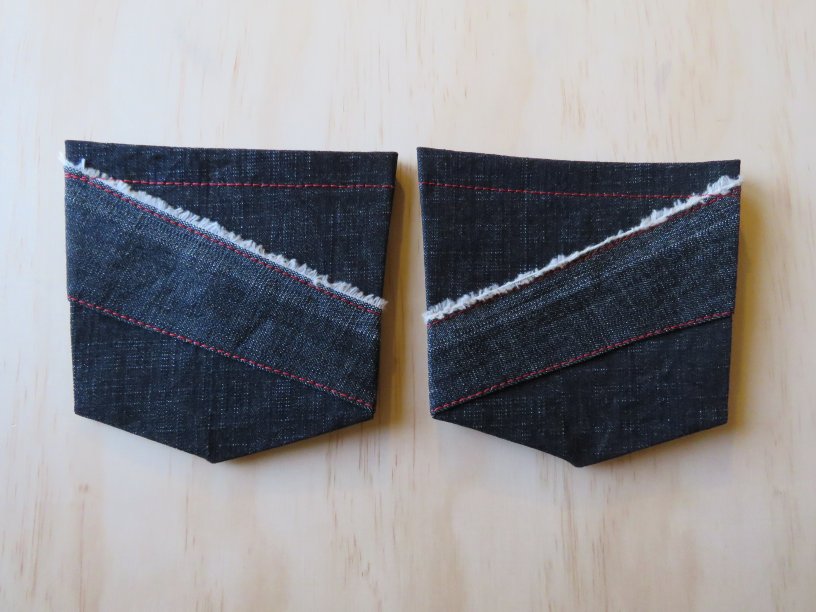
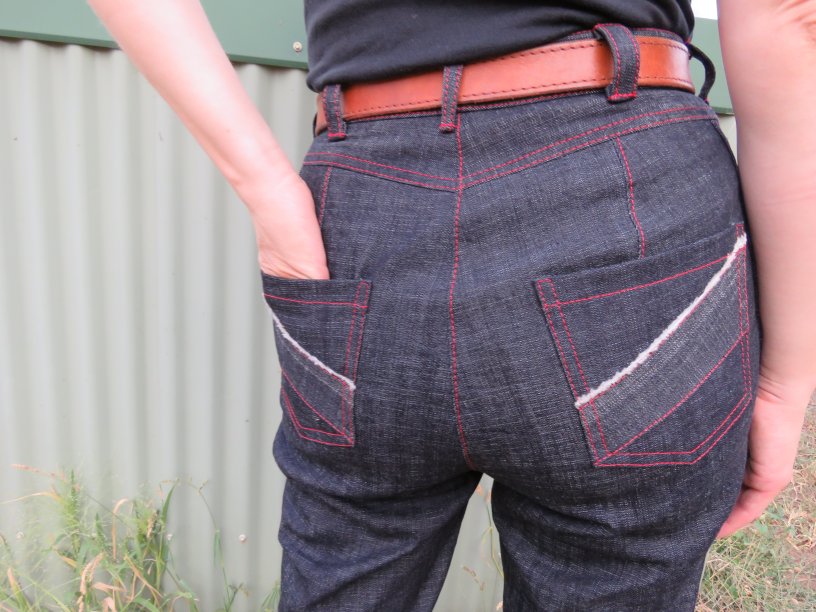
Those horizontal wrinkles below the seat are due to my posture in the photo (the ground slopes and I’m leaning back) not poor fit btw.
The belt loops were made from a long strip with tapering ends.
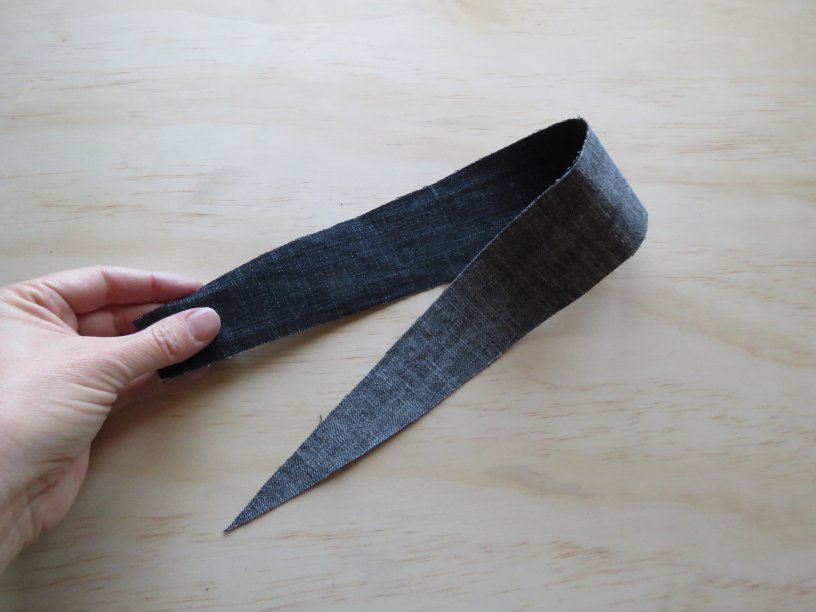
The tapered ends were simply pressed under less as I made the belt loop, to compensate for being narrower.
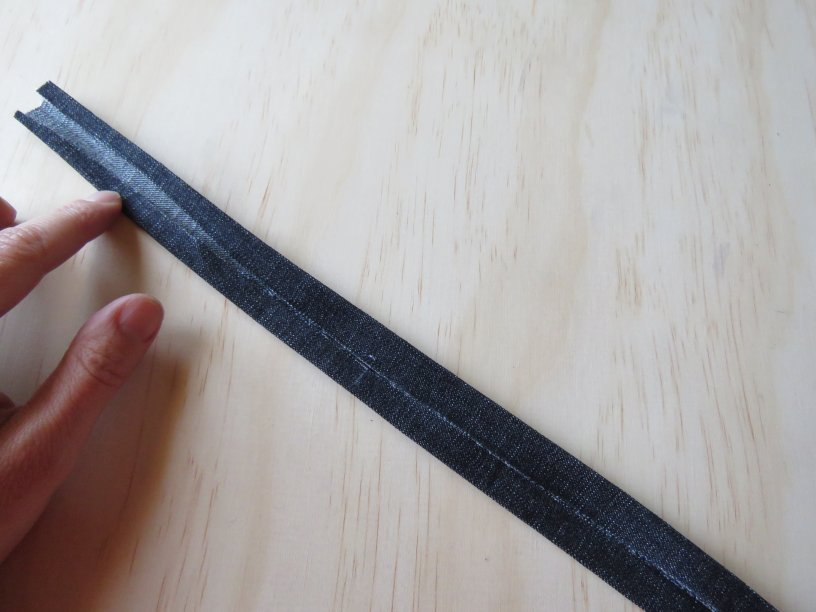
While not all the belt loops turned out to be the same width, they are symmetrically placed on the jeans.
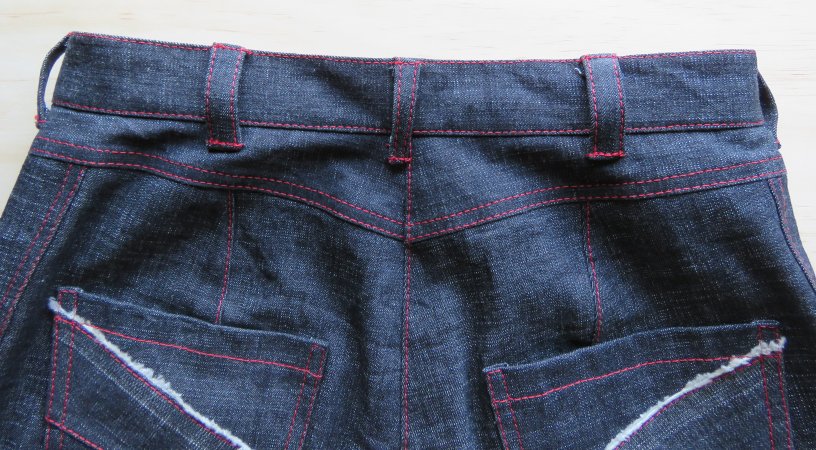
The back of the waistband has a different seam allowance than the waist’s, which I could have avoided if I’d thought a bit harder during cutting.
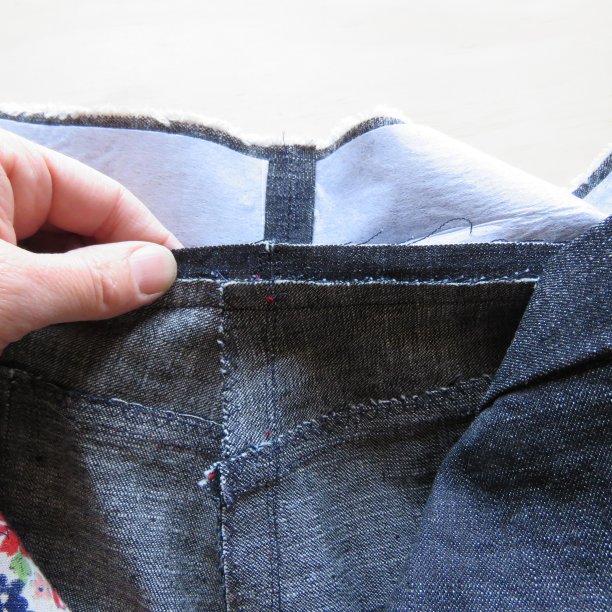
I bound the fly facing and front pocket bags instead of overlocking. I wouldn’t normally but there was motor sport on TV on the weekend (Clipsal 500) and I’m banned from using the overlocker during the telecast. Too noisy. Ditto for bobbin winding. (I can get around this by doing it during the ad breaks though.)
Note the shape of the fly shield which is wider at the bottom.
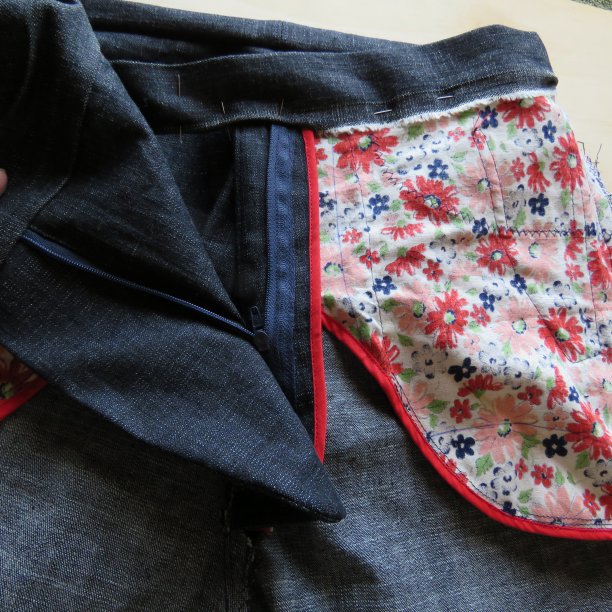
These jeans have knee patches made from off cuts. I’m not so keen on the idea of disposing of scraps as applique, although I always did want knee patches; my jeans tend to wear out first in the knee department. I didn’t want it to look like I just cut out a pair of jeans and put all the scraps on the knees.
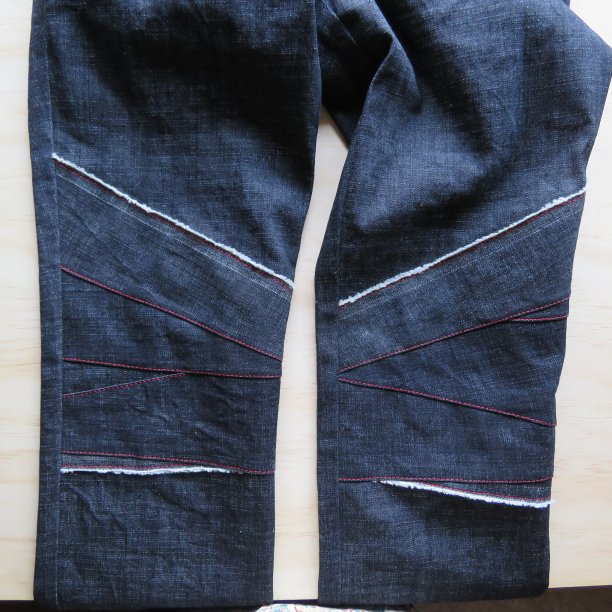
Final reflection: I set out to make a pair of zero waste jeans but ultimately I failed on the zero waste part; I have a handful of small denim triangles remaining. In my mind there are no levels of zero. Zero is zero.
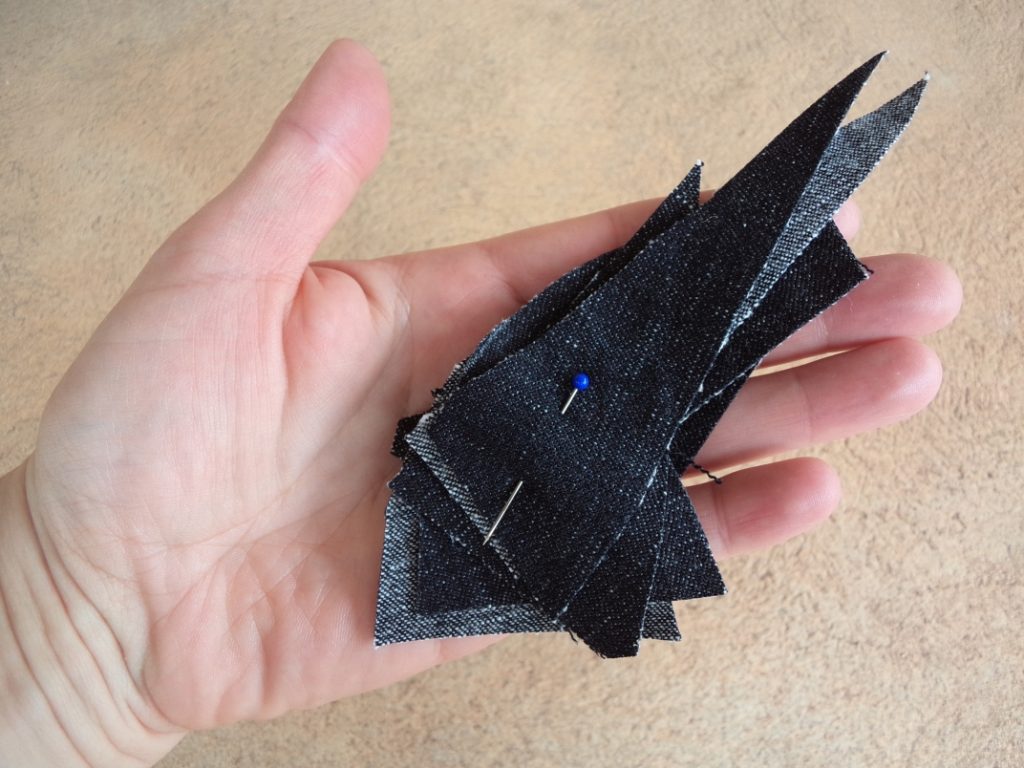
However, the project was a success in other ways. I have a pair of jeans I like. The experience will lead to improvements for the next pair. I found out about using Coke to soften denim (thanks Chris Schwab!). I realised how hard it is to cut zero waste patterns with expected outcomes and why we aren’t mass-manufacturing zero waste jeans.
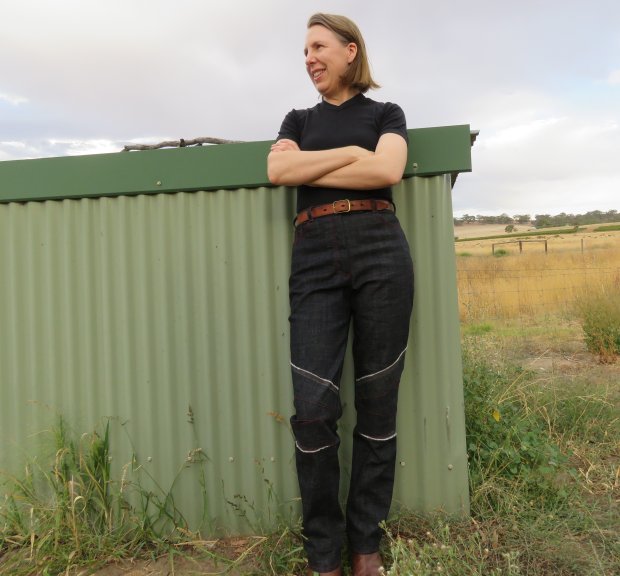
Cheers!
Wow, the jeans look amazing Liz – congratulations that is an awesome feat. The finished product may not have ‘technically’ been zero waste, but you could almost count the fibers left over.
Thanks Julie. While I didn’t quite get to zero waste I’m still very pleased with them.
I love the pink topstitching – looks great
It does looks pink in the photos but it’s really deep red. Wouldn’t mind pink though. I actually thought the denim was black when I was buying it, it was so dark, but when I photographed it I realised it was very dark blue.
Hi Liz, I’ve finally gotten around to reading your blog, great job the jeans. but your comment of softening denim in coke intrigues me. what did you do? i hate stiff denim.
Thanks Phoebe. Re: coke, apparently Peggy Sagers of Silhouette Patterns suggests washing stiff fabrics in Coke, original only, low water, no soap, several times if desired (google for more info). I was going to do this since the fabric was like cardboard, but I found that after a few wears the jeans softened up considerably – much like chamois does after working it in your hands. So I never got around to it. I would be interested to hear if you try it.
Wow that’s incredible! A fine jean with a wonderful purpose! I admire your achievement there 🙂
Cheers, Ervhan!
So coool ! well done Liz !!!
I’m glad you made your own experiment and achieved such an interesting pair.
It’s definitely not easy to get to zero especially when we want to stick to conventional shapes but you did a great job. For me, minimal waste is as important as zero waste…especially if it enables the garment to be scaled. It makes a huge difference
Keep up the good work !
Many thanks Mylene.
Use pieces left over for pincushion
Thank you. I could do that – I actually still have the scraps!
Every few months, I reread this post. I love the silhouette of your jeans and am inspired to figure out how to make my jean pattern closer to zero waste. I love brain puzzles!
Thanks Tory – I’m thinking I should revisit this project and try another pair.